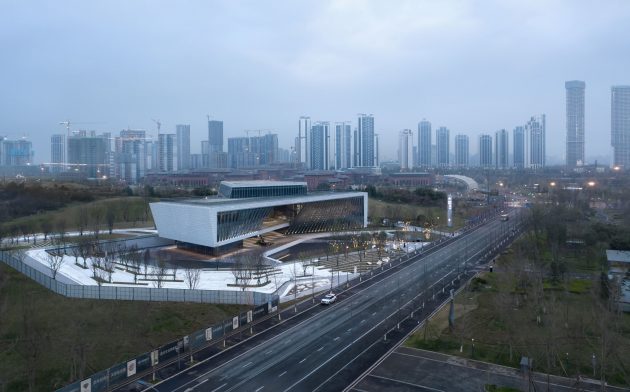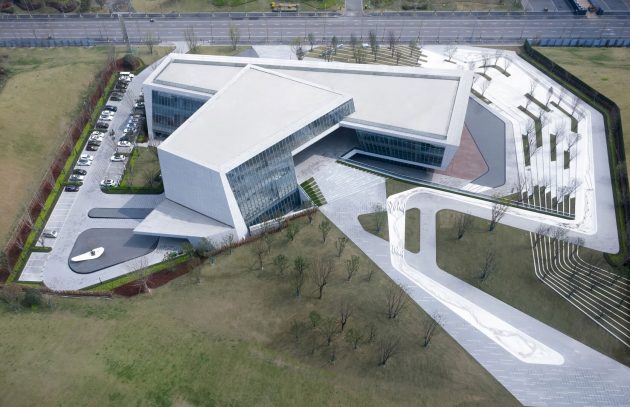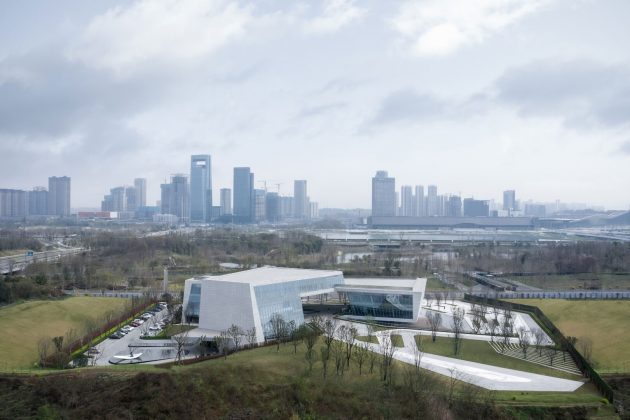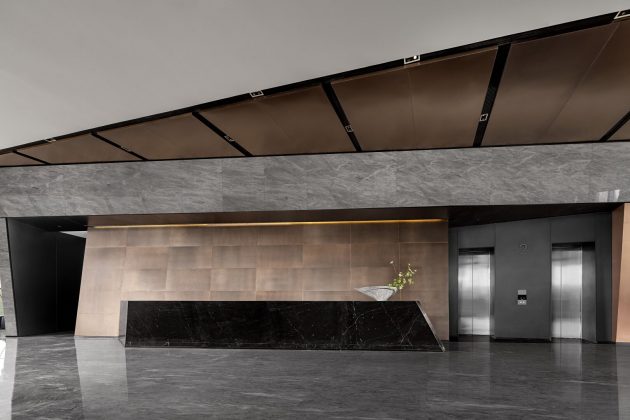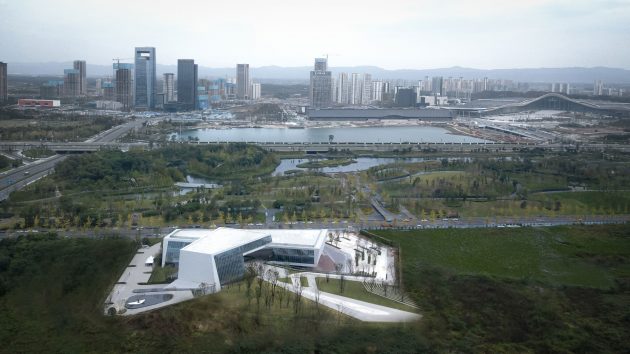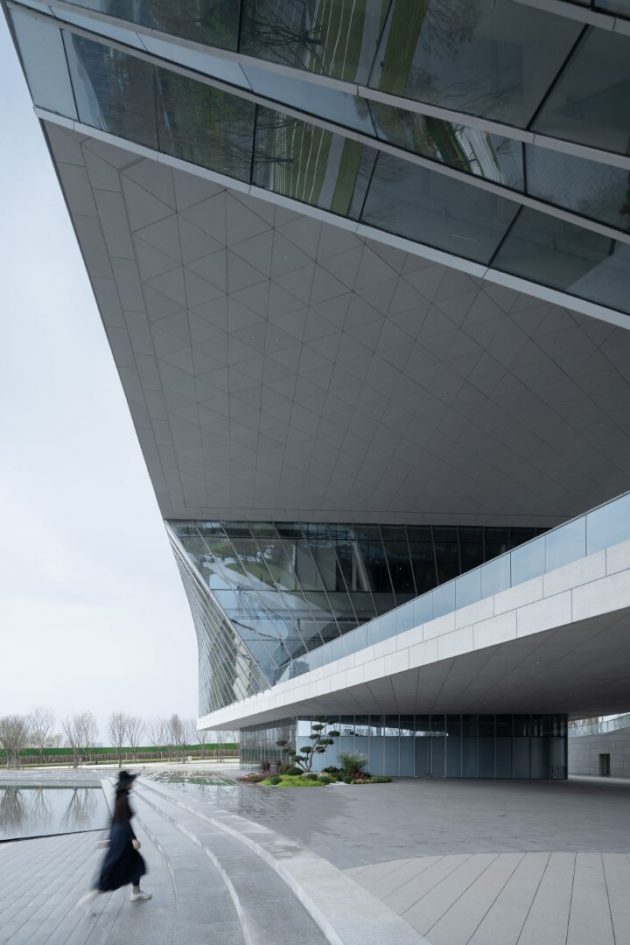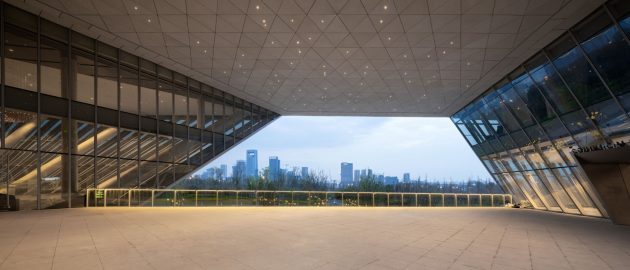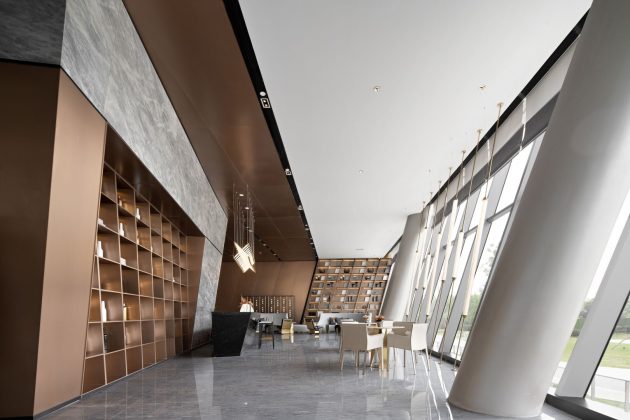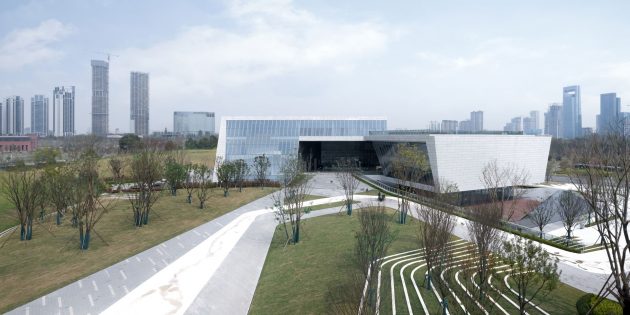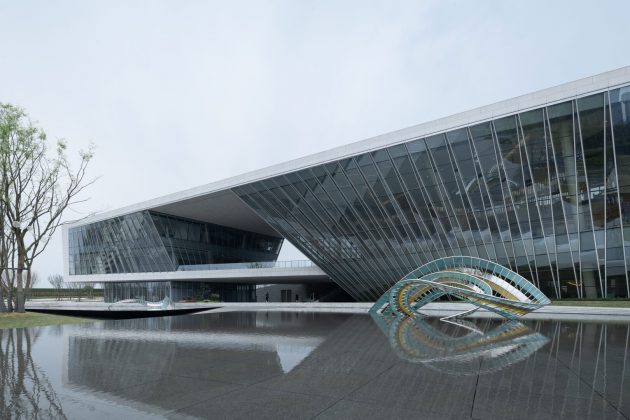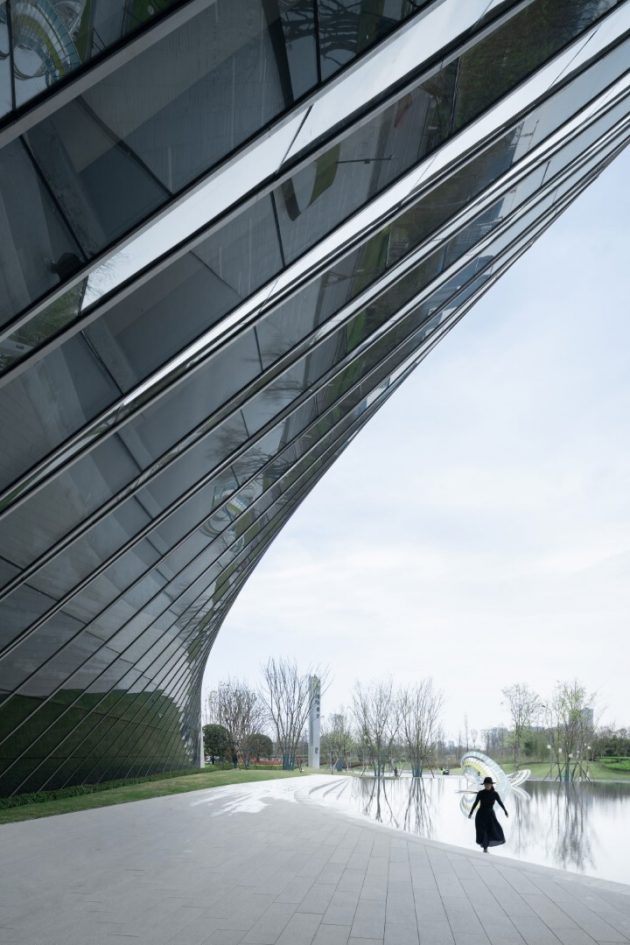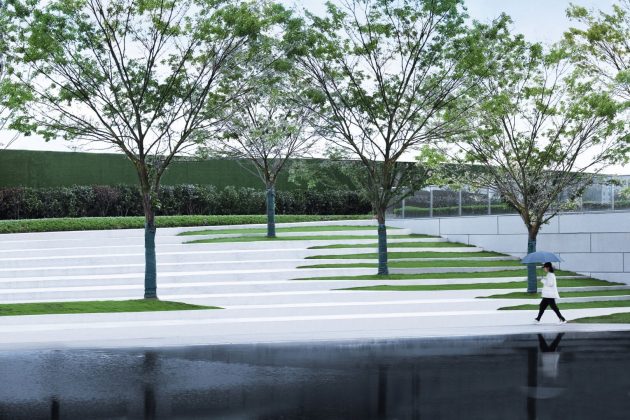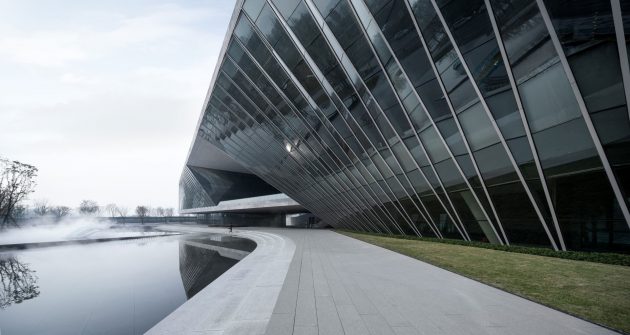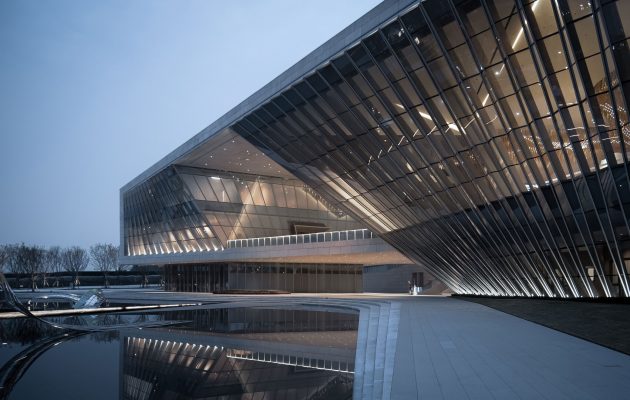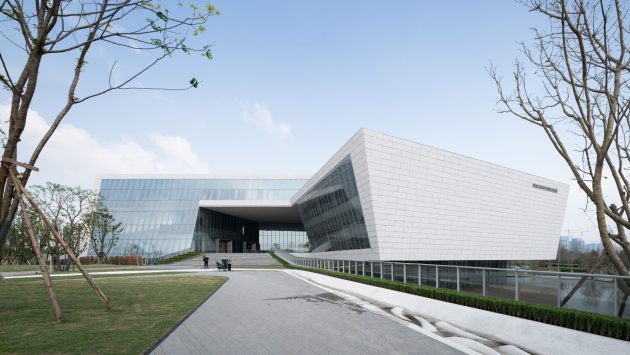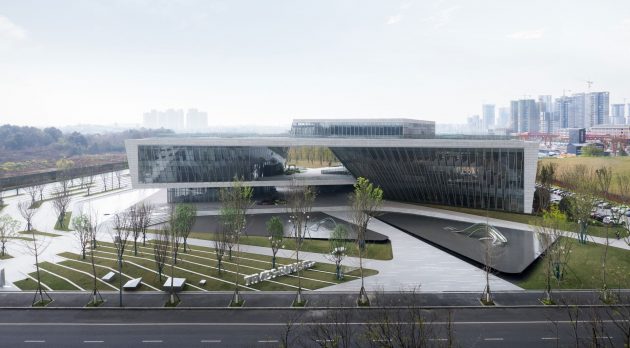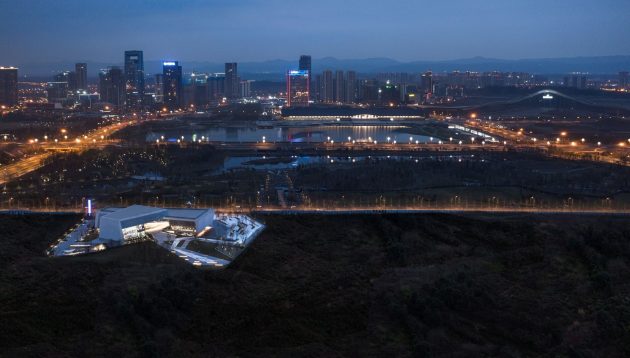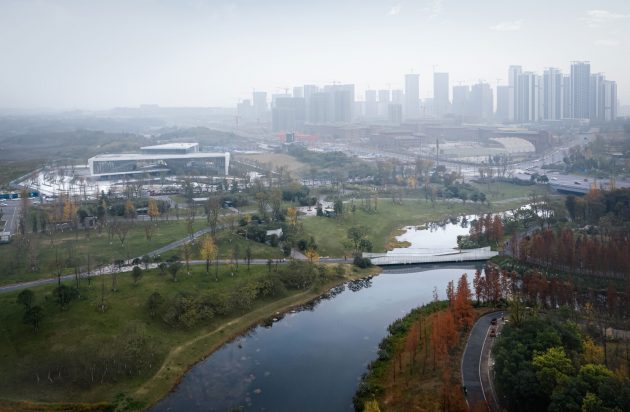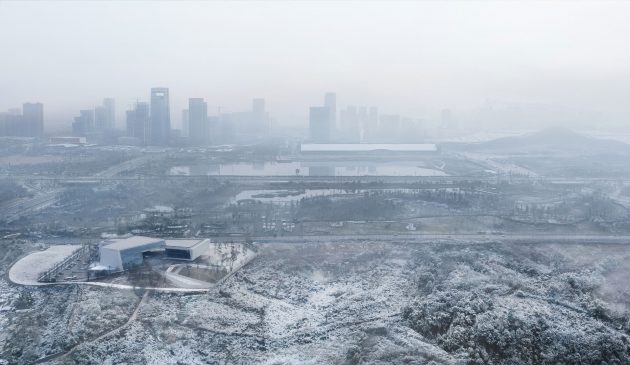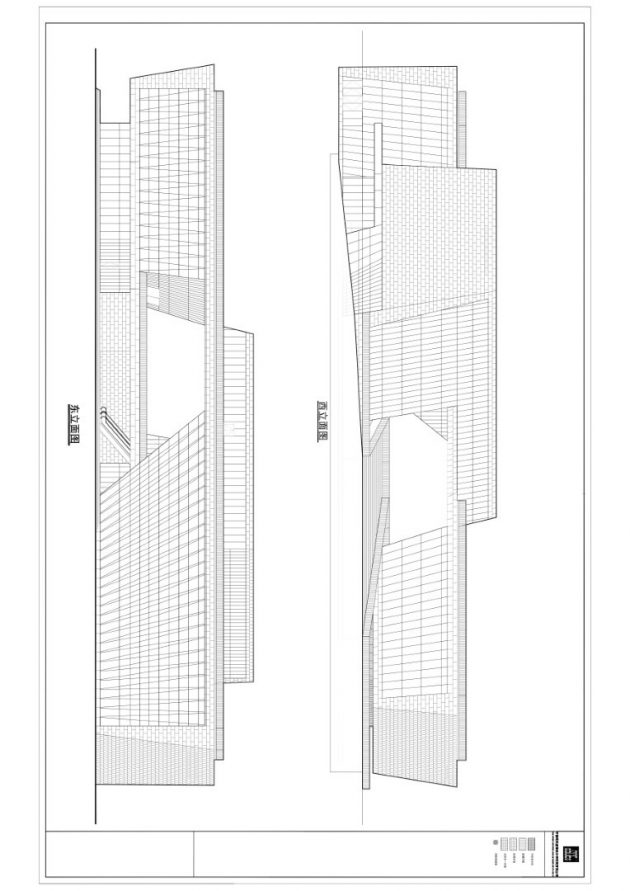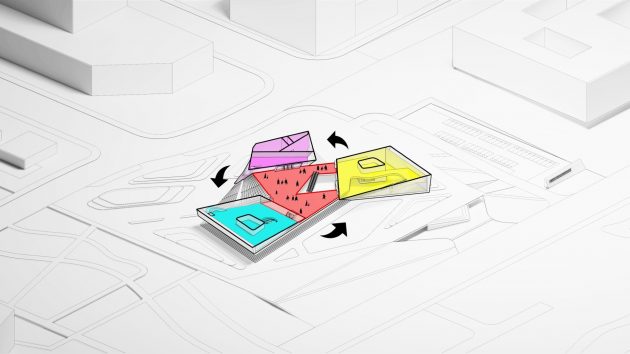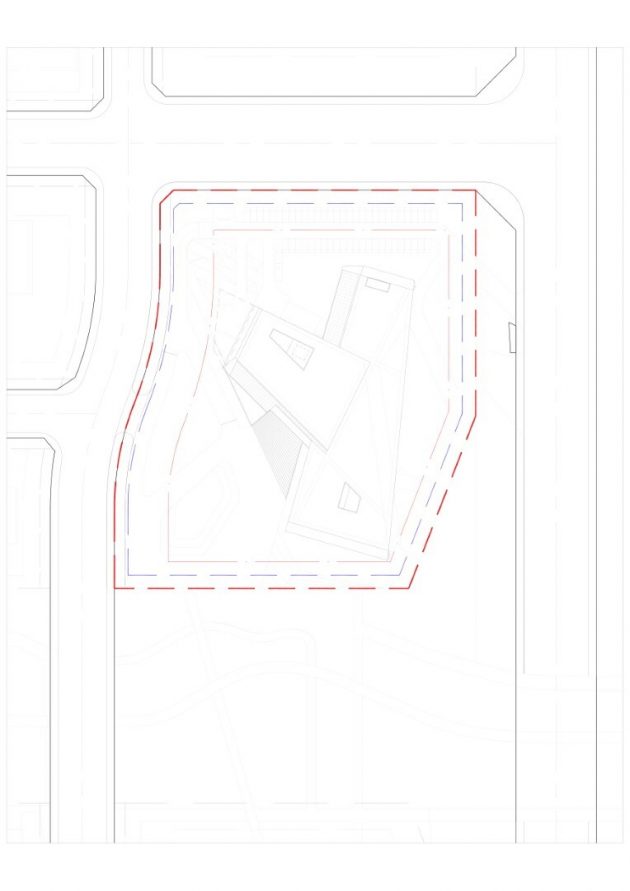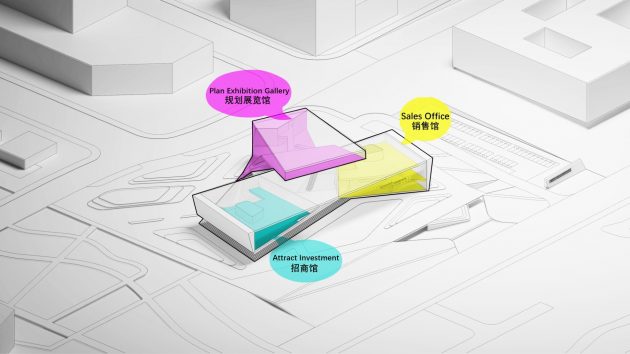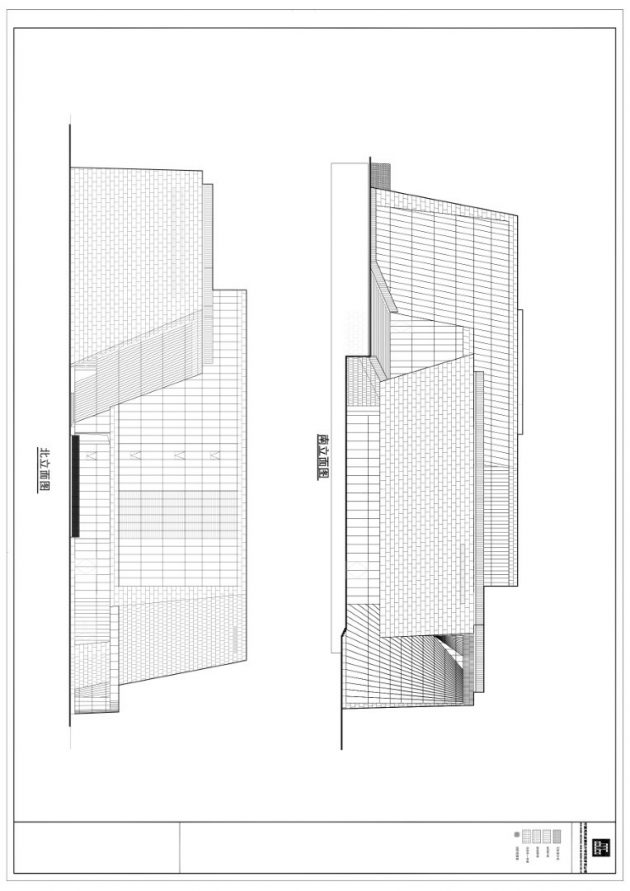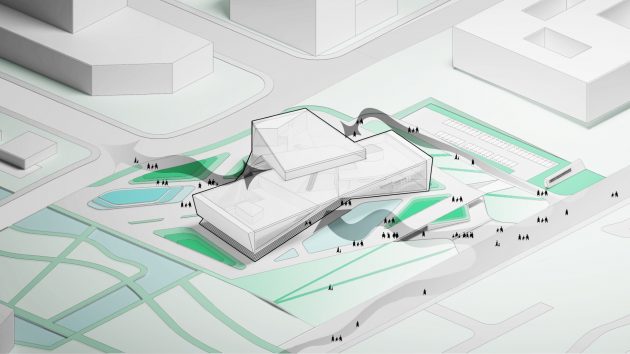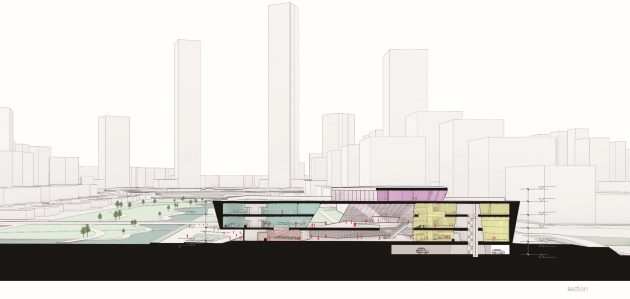Project: Tianfu Stage
Architects: AAI – Monster LAB
Location: Yazhou Road, Tianfu Park, Tianfu New District, Chengdu City, Sichuan, China
Area: 97,058 sf
Photographs by: xf photography
Tianfu Stage by AAI – Monster LAB
Definition: Tianfu “Stage”
Monster Lab, the new creative studio of AAI International Architecture, won a national design competition for the Chengdu Merchants Urban Planning Exhibition Hall in the New District of Tianfu. As the first exhibition hall and demonstrative project to be built in Tianfu, the project will bear witness to the new area’s progression from empty fields to an economically prosperous urban district, characterized by new skyscrapers and a culturally diverse populace.
Through “refining traditional achievements and expressing future excellence”, we hope that this building, with its mission of showcasing the district’s timeline, will be compatible with Chengdu’s cultural past and speak to the future possibilities of urban development here.
The concept of “stage” came from the fact that in today’s China, new cities are springing up everywhere, with each one advertised as being at the forefront of urban planning concepts. But where is the root of these new cities? We decided to find the answer in the ancient city.
The framework of the building was born out of the theatre, a common public building type in old Chengdu. Typically in these theatres, in the middle of the laneway, under its eaves, the stage space and the overhead space overlap with each other. This forms a dual interaction with the city and spectators: performance and participation (the “stage space” acts as the container of the performance, while the “overhead space” ensures the road below is easily accessible).
We have abstractly interpreted these elements and incorporated a contemporary visual language to renew this spatial structure. In response to the needs of the client, the building has been equally divided into three volumes to exhibit future planning, future business, and future life, respectively. At the intersection of the three volumes, we have designed a shared space called the “Tianfu Stage”. It draws people in and through to overlook a magnificent view of the new city, in accordance with the structural logic of the “stage space” and “overhead space”.
At the same time, people watching the scenery from the “stage” also become “dancers”, being potentially seen from the landscape outside the building. A public observatory has been placed overtop the “stage”, allowing visitors to see higher and farther from the commanding heights of the building.
Site Response: Frame
“A city is an ‘ecosystem’ in which the buildings are the animals or plants inhabiting it.” In Monster Lab’s design philosophy, architecture should have vitality, take root like a tree, and absorb the “sunlight, air, and nutrients” of the place, in order to give growth to a unique appearance. This is exactly the approach taken for the design of the Tianfu Stage.
As the project is located east of the CBD (Central Business District) within a green landscape corridor, the site provides an excellent view of the complex cityscape of towers to its west. Taking the pre-existing landscape into account, our design process first assesses existing sightlines, and then rotates and folds each functional volume, in order to arrive at the ideal relationship between people in and around the building, and the scenery surrounding it. Architecture is about defining viewing opportunities and behavior, just as painting is about frames – constraining a boundary and drawing attention to the most essential content. The scenery of the new city is fluid. In “framing” it, we hope to preview its future form, echo and interact with it, and grow together.
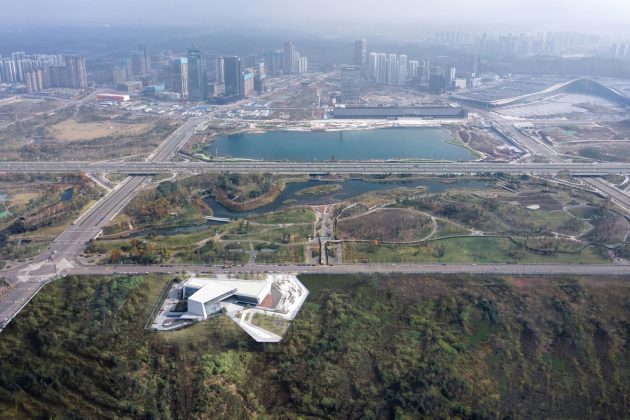
We closely follow the planned form of the urban skyline to constrain the height and overall dimensions of the three building volumes. Within the frame of the “stage”, we may witness both the city and the skyline gradually developing into a comprehensive whole, in which the “stage” will be an active part. This is a building derived from and rooted in its place: its design logic is adapted to align with the presence of the surrounding scenery, and the presence of people.
The building also prioritizes visitors’ field of vision in regards to its facade treatment: the areas with better east and west views are clad with large glass curtain walls, while the north and south walls are solid. While the virtual and real coexist, the design suggests a temporary abandonment of redundant interference, allowing the “real” to take priority and letting one’s attention/ line of sight to be focused again.
Chengdu is a city where recreation and enjoying the pleasures of life are commonplace, and its unique climate makes its outdoor spaces particularly well suited for leisurely activities. In the “Tianfu Stage”, we designed an outdoor cinema based on the south-facing solid wall and the landscape space adjacent to it – providing visitors and viewers with multiple participation possibilities, injecting new energy and potential into the architecture and the future development of Chengdu.
Vision: Pull back the “Curtain”
Where there is a stage, there will also be a curtain. It represents a pivotal state of “beginning”: the curtain has not yet risen, the lights are dim, and there is no sound; when the curtain goes up, everything that unfolds onstage draws people into a vivid experience, seemingly real and completely immersive. “Tianfu Stage” is based on a new origin of the city, so naturally it follows it also has a “curtain”.
On either side of the “stage”, folded glass façades act as its “curtain”. Their folding forms echo the face-changing folding fan of Chengdu’s characteristic Sichuan Opera. The unique shifting angles of the façades breaks up the scenery reflected on the glass, producing a dramatic kaleidoscope-like effect, allowing the space to “change face” and create surprising patterns for visitors walking past.
In addition, the inwardly inclined cantilevered glass façade forms an ecological self-shading system. There is no need for curtains on the interior, giving people within a free, unencumbered view of the scenery around the building all year round – furthering our intent to have the design take its place within the ecological concept of the park city.
Today, the “Tianfu Stage” has been returned to the city, the public, and time. It will serve as an important public space in the area, acting as a real “stage”- waiting to be filled with interior design, and rejuvenated by human activity and society. Urban life and collective memory are reshaped by the project, given different faces by the growth of the city and landscape… The design completes the space here, with all of its aspects realized to ensure long lasting value to the city and its populace.
-Project description and images provided by AAI – Monster LAB

